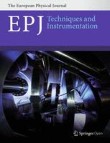This collection of articles describes progress on the Future Circular Collider (FCC) lepton (electron-positron) design as well as the hadron collider design. The FCC is a proposed 100-km collider complex based at the CERN particle physics laboratory, profiting from the laboratory's existing research infrastructure. The FCC Conceptual Design was documented in a series of reports in EPJ that were published June, 2019 and were submitted to the 2020 European Strategy for Particle Physics (ESPP). The 2020 ESPP supported the idea of following the HL-LHC with a Higgs factory based on a lepton collider followed by a 100 TeV-scale hadron collider. The FCC is aimed at such a facility. A feasibility study has been started to optimize the FCC design and study detailed placement options; this will be published in 2026 to support the next ESPP. During the feasibility study, the parameters of the rings are in flux but this collection of articles provide updates to the concepts put forth in the Conceptual Design Report. Topics include a parameter and layout update for the electron-positron collider, optics considerations for the hadron collider, fundamental beam physic challenges including collective effects as well as optics correction and stabilization, and possible technological solutions for some of the challenging hardware in the FCC complex.
Guest Editors
Angeles Faus-Golfe, CNRS/In2p3
angeles.faus.golfe@cern.ch
Tor Raubenheimer, SLAC
tor@slac.stanford.edu
Submission Information
Please note during the submission process, choose the relevant special issue under the Additional Information section when asked “Are you submitting to a Thematic Series?”. The topical issue is available as “TS: Accelerating the design of the future circular collider”
---------------------------------------
